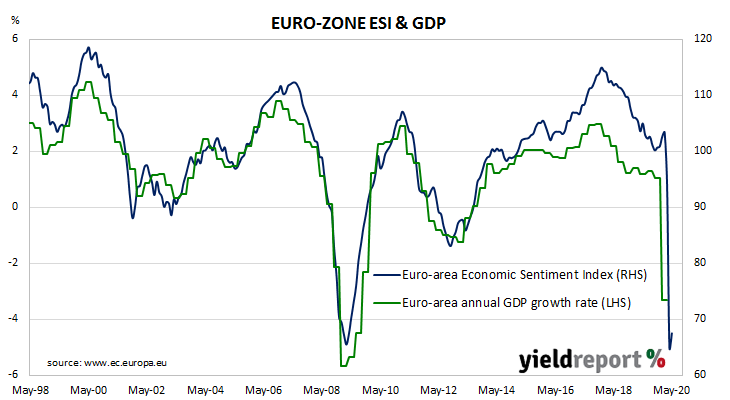Summary: Euro-zone composite sentiment index improves for second consecutive month; under expectations; all major economies’ indices improve; sovereign bond yields unresponsive; implies GDP smaller contraction.
The European Commission’s Economic Sentiment Indicator (ESI) is a composite index comprised of five differently-weighted sectoral confidence indicators. It is heavily weighted towards confidence surveys from the business sector; the consumer confidence sub-index only accounts for 20% of the ESI. However, it has a good relationship with euro-zone GDP, although not as a leading indicator.
The ESI recorded a reading of 75.7 in June, well below the market’s expected figure of 82.5 but up against May’s reading of 67.5. The average reading since 1985 has been just under 100.
Overall sentiment in the euro-zone improved as all five confidence sub-indices showed gains. On a geographical basis, the ESI rose in most euro-zone economies, including the larger ones of Germany, France, Italy and Spain.
German and French bond yields barely moved. By the end of the day, the German 10-year bund yield had ticked up 1bp to -0.47% while the French 10-year OAT yield had slipped 1bp to -0.13%.
End-of-quarter ESI and euro-zone GDP growth rates are strongly correlated. This latest reading corresponds to a year-to-June growth rate of -2.60%, up from May’s implied growth rate of -3.90%.

